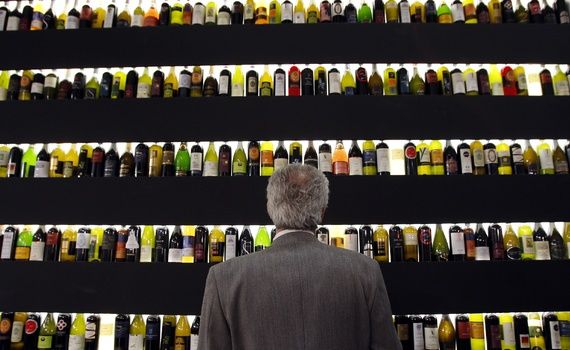Since even certified experts have trouble differentiating vintages, it’s hard for the lay drinker to justify paying a premium for bottles from well-regarded regions.
There’s a remarkable scene in the 2013 documentary Somm, in which Ian Cauble, one of the film’s four primary subjects, is doing a practice run of an exam he’s spent years preparing for. He must identify the vintage of six glasses of wine—three whites, three reds. He smells and sips the first glass, then lets his verdict take shape: “This one is from the New World, with a warm climate, due to the medium acid and the high alcohol. Very glossy, very extracted, lots of glycerol,” he says with increasing certainty. Employing practiced anaphora, Cauble concludes, “This wine is from the United States. This wine is from California. This wine is from Sonoma County. This wine is from the Russian River Valley.”
The wine was actually from Burgundy. He was only about 5,700 miles off.
If Cauble—who spent the better part of his days and nights with his wine flashcards—couldn’t get it right, what justification does the drinking public have for spending more than, say, $20 for a bottle with a prestigious provenance? It’s of course necessary to draw a floor of quality that rules out the likes of Franzia, but most people can’t tell the difference between any two bottles that meet that standard. There’s no argument—aside from supporting local or environmentally sustainable vintners—for spending any decent amount of money on a fine wine.
Well, except for one: Study after study has shown that people enjoy a wine more the more the pay for it. If someone believes a wine to be of high quality—if they view its producer as truly high-end—it ends up tasting better to them. “Marketers cannot assume,” the authors of one 2008 study in the Journal of Wine Economics wrote, “that intrinsic product attributes, even when experienced, will be weighted and interpreted accurately by consumers.” Since price is a strong predictor of enjoyment, one could make the argument that the wine industry is actually set up according to a certain logic: People pay more to buy the products they end up enjoying more.
more on theatlantic.com




